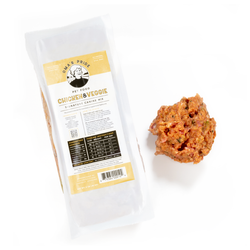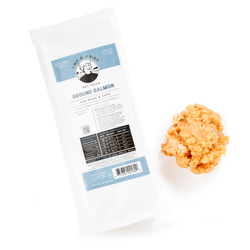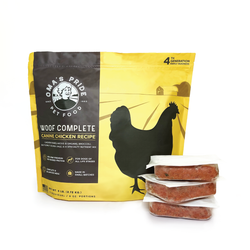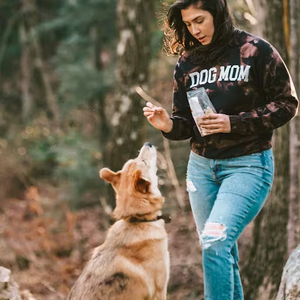Do Dogs Get Bored? 7 Best Ways To Entertain Them
Everyone gets bored sometimes…even dogs!
When humans get bored, we can easily fix it. We can go for a drive, pop in a movie, or play a game on our phones.
On the other hand, domestic dogs rely heavily on owners for entertainment. Although they might like to, they can’t take themselves for a walk, play fetch solo, or cook up dinner when they get hungry.
So, do dogs get bored?
Yes! Bored dogs are understimulated and tend to seek stimulation in destructive ways. Your dog might be bored if they chew up furniture, make a mess, dig a hole, or bark excessively.
In this blog, I’ll share with you how to spot signs of dog boredom. I’ll also show you the best strategies to entertain your furry friend, such as giving them a bone, trying a puzzle, exercising, training, and more.
Table of contents
- Signs of a bored dog
- Separation anxiety versus boredom
- Impact of dog's age and breed
- 7 strategies on how to entertain your dog
- Chews and bones (strategy #1)
- Puzzles (strategy #2)
- Exercise (strategy #3)
- Training (strategy #4)
- Hide and seek (strategy #5)
- Socialization (strategy #6)
- Safe spaces (strategy #7)
- Frequently asked questions
Signs you have a bored dog

Every dog is different, so one dog’s boredom might look different than another’s. Another way to say “bored” is “understimulated.”
All dogs, no matter the breed, need daily stimulation of some kind to stay healthy. If they become too pent-up with energy, that positive energy can overflow into negative behaviors.
As pet parents, it’s our job to provide healthy energy outlets for our pets so they don’t seek out unhealthy entertainment.
Here are some of the tell-tale signs that your dog is understimulated and bored:
- Chewing, tearing, or shredding. A bored dog might destroy every toy, pillow, or piece of clothing in sight. Dogs naturally desire to chew, but they can take this out in an unhealthy way if they are understimulated.
- Digging. Digging is natural for dogs, but it can quickly turn destructive when they are bored. Digging inside can lead to torn-up doors or carpets; digging outside can result in ruined fences, walls, sprinklers, or unwanted holes.
- Excessively barking. All dogs bark (some more than others). Excessive barkers won’t stop vocalizing no matter how often they are told to stop. These dogs might even bark all day and disturb the neighbors.
- Eating non-edible objects. Bored dogs may begin eating non-edible items, like paper or stuffing from toys. Not only is this unwanted, but it can also be dangerous for your dog as it can lead to blockages or an upset stomach.
- Jumping. Constant, unwanted jumping is a sign that your dog has built up energy and is trying to get your attention. Although some may see this behavior as “cute,” it can lead to dangerous situations where a dog claws at a person or knocks them over.
- Not sleeping when they should be. Dogs naturally sleep many hours a day (especially if they are puppies or seniors). If you notice your dog can’t rest, is pacing, or can’t settle down, they might be bored. Please note, not sleeping could also be a sign of another medical condition, so don’t ignore it either way!.
Separation anxiety vs boredom
Some of the destructive behaviors listed above can also be signs of separation anxiety. While boredom and separation anxiety are linked, they are not the same.
- Boredom or general anxiety. A lack of stimulation typically causes boredom. It tends to be less severe than separation anxiety. It might take a bored dog a few hours of being alone to begin destructive behaviors. You can alleviate boredom by providing adequate enrichment activities.
- Separation anxiety. Separation anxiety is a behavioral issue that causes intense distress in a dog left alone. Separation anxiety tends to be more severe than boredom. It may take the help of a behavior specialist to alleviate your dog’s fears and boost their confidence.
The connection: dog breed, age, and boredom
While all dogs can become bored, it’s essential to consider your dog’s breed and age when understanding their stimulation requirements.
For example, my dog Lula is a mix of intelligent, hard-working, task-oriented breeds (Australian Shepherd, Great Pyrenees, German Shepherd, Husky, Malamute, Chow and Grey Wolf).
Lula’s exercise and stimulation requirements are much higher than those of a smaller dog like a Maltese. When I got Lula, I knew I would need to set aside more time and energy each day to ensure she doesn’t become restless.
Tip! High-energy dog breeds tend to have a higher stimulation requirement than others. Border Collies, Dalmatians, Greyhounds, Vizslas, Jack Russell Terriers, and Labrador Retrievers are just a few examples of dogs that need more daily entertainment than others to stay healthy.
Additionally, certain high-energy dog breeds are bred to perform a job, increasing their stimulation requirements. For example, some dogs are bred to be bird, herding, tracking, or guard dogs.
Finally, you must consider your dog’s age when calculating how much entertainment they need. Puppies and seniors sleep most of the day but still need walks or play time to avoid boredom.
All dogs, regardless of breed or age, can benefit from daily exercise or activities. Next, we’ll discuss specific strategies you can use to relieve your dog’s boredom.
How to entertain your dog (7 strategies)

Strategy 1: Give your dog a natural chew or bone
First, consider giving your dog natural chews or bones. These are a great way not only to keep your pup occupied but also to clean their teeth at the same time. Check out our complete raw bone guide here!
Both recreational bones and natural chews have numerous benefits for your pup, including:
- Releases endorphins through chewing and ripping
- Removes tartar and plaque from teeth
- Strengthens and exercises the mouth and jaw
- Keeps your dog entertained for long periods of time
- Provides crucial mental and physical stimulation
Wondering what type of chew or bone to give your dog? Here are some popular bones and chews for you to choose from:
- Raw bones. Raw bones, such as marrow, knuckle, or rib bones, are uncooked, weight-bearing bones from animals like buffalo, cow, elk, or bison. They typically have tendons and some meat attached. Larger marrow bones are more appropriate for medium to large dogs, while smaller rib bones are suitable for smaller dogs.


- Yak, Himalayan, or cheese chews. Yak chews are typically made from limited ingredients like milk, salt, and lime. These long-lasting, hard, odorless treats are great for most chewers as they don’t contain bones or sharp edges. For very aggressive chewers, you can soften the chew by soaking it in water or briefly putting it in the microwave before serving.
- Antlers. Antlers, like low-odor Moose Antlers, are some of the hardest, long-lasting chews on the market. Antlers tend to be very large and suitable for medium, large, or extra-large dogs. Antlers are ideal for gentler chewers because being too aggressive can lead to splintering.
- Hooves and horns. Cow hooves or horns from animals are very similar to antlers (see above). They are ideal for larger dogs and gentle chewers.


- Stuffed bones. You can reuse or recycle a raw marrow bone by stuffing it with a treat like a freeze-dried round, peanut butter, cheese, pumpkin, fruit puree, or anything else you can think of! You can also re-freeze the stuffed bone, so it takes your pup even longer to chew on it.
- Beef trachea. A beef trachea is a cartilage tube from a cow's throat. It is typically baked or dehydrated. These fully digestible chews are safe for more aggressive chewers as they are made of 100% soft cartilage. Trachea is sold in different lengths for dogs of various sizes.
- Lamb weasand twists. Lamb weasand twists, or dried lamb gullet, is another natural chew option. They are generally safe for most chewers but don’t last as long as harder chews. These twists contain healthy protein and glucosamine for joint health.
- Bully sticks. Bully Sticks are fully-digestible chews made from dried bull penis. These are long-lasting chews that come in different sizes and lengths for all types of dogs. Bully sticks are a rich source of amino acids and protein.
- Ears. Cow or pig ears are cartilage chews suitable for dogs of all sizes. They are sold baked or raw. These chews are easier on your dog’s teeth, are great for more leisurely chewers, and contain joint-boosting chondroitin and glucosamine.
Safety while chewing
Giving your dog a natural chew or bone is generally very safe when you follow best practices.
First, always give your dog a chew that matches their size and level of excitability. For example, an aggressive chewer might do better with a softer chew like Beef Trachea (which contains no bone or sharp edges) than a raw marrow bone.
Second, don’t leave your dog alone with a chew. Even if your dog is an experienced chewer, staying close and intervening if necessary is always best.
Third, never cook or boil a raw bone and feed it to your dog! Raw bones are intended to be served raw. When you heat a raw bone, it removes the moisture, leaving the bone brittle. Your dog can easily be injured by splintering if they eat a heated raw bone.
Finally, try to stay away from synthetic or plastic chews. Products like rawhide are unnatural, difficult to digest, and can easily lead to blockages or choking. Toy bones made from plastic or non-edible materials are also not a great idea because you don’t want your dog ingesting toxins or plastic.
Although some products like teeth-cleaning Greenies are marketed as “digestible,” a closer look at the label reveals many synthetic ingredients. Natural chews with limited ingredients are a cleaner and healthier alternative to entertain your dog (and clean their teeth!) in the long run.
Explore Products
Strategy 2: Puzzles, snuffle mats, or other activities
The next strategy you can use to entertain a bored dog is an interactive puzzle or activity.
Like humans, dogs enjoy solving problems, which builds confidence and reduces anxiety. Dogs also gain a sense of purpose and accomplishment from successfully finishing important tasks. This is where dog puzzles come in!
Here are some puzzles or activities you can try at home:
- Puzzle boards. Dog stores and online retailers like Amazon or Etsy sell “puzzles” for dogs. These usually involve hiding a treat inside the puzzle and letting your dog dig, open, slide, or move around parts to reveal the treat. Some are harder than others, so make sure you get a difficulty level suited for your dog.


- Snuffle mats. Snuffles are a cute and quiet option for bored dogs. They are usually made of felt-like fabric and have small pockets, ruffles, and flaps to hide treats. Snuffle mats also double as excellent training for scent work! These are typically machine washable, which is fantastic as they can quickly get dirty.
- Slow-release treat dispenser. A slow-release treat dispenser like the Rockin' Treat Ball is a great way to reward curiosity and entertain your bored dog without overfeeding them. You can also try something like the Twist 'N Treat, which allows you to twist it to make accessing the treats more and more difficult.
- DIY puzzles. If you’re not interested in buying a puzzle, you can always make your own at home! For example, try filling an uncapped water bottle with treats. Your dog can try to figure out how to get the treats out by flipping the bottle (just watch to ensure they don’t eat or tear open the bottle).
When I do puzzles to entertain my dog, Lula, I like to use low-odor, single-ingredient, low-calorie, and easily breakable treats like Lamb Lung
Strategy 3: Exercise and more exercise
The next way to entertain your bored dog might seem simple, but its importance can’t be overstated. Your dog needs good ol’ fashioned exercise.
It’s simple: the more tired your dog is, the less likely they are to get into trouble when bored.
As I mentioned earlier, some dogs require more exercise than others. However, most dogs benefit from at least one nice walk or run daily to get them out into the fresh air, sniffing, and socializing.
If you don’t have time to go for a walk, you can try playing fetch in the front yard or tug-of-war inside with a durable toy to help your dog expend some energy.


Tip! If your dog is acting bored or less excited on a walk, try switching up your walking route. Like humans, dogs enjoy experiencing new sights and smells. Simply taking a different path or going in a different direction can relieve your dog’s boredom.
Also, different walks can have different purposes. If the goal is exercise, you might run, but you can also try a “sniff walk.”
Sniff walks let your dog stop and smell whatever they desire for as long as they want. Although you might not make it very far, your dog will be highly entertained and stimulated after this type of exercise.
Strategy 4: Train your dog
For dogs, “training” and “playing” are very similar.
Dogs need a purpose, just like humans. They love to please their owners through obedience and feel stimulated by meeting a challenge or learning something new. Training is also a great time to bond with your dog!
Training your dog can mean a few things. Most owners are familiar with teaching the basics like sit, stay, down, shake, and turn around.
If you sense your dog is bored, try teaching them a new trick like “play dead” or run through a circuit of tricks they already know. You can use small treats like Beef Lung during trick training or reward your dog with verbal praise.
Home training your dog is good for obedience and provides your pup with crucial mental stimulation so they don’t become bored.


Here are some other ways you can train your dog:
- Go to a dog park with an agility course. Some dog parks have ramps, tunnels, dog jumps, or weave polls. You can train your dog to jump, dive, or run through various obstacles in the park to entertain them in a new environment.
- Join a dog training class. There are many types of dog training classes, from puppy training to agility to behavioral training to clicker training. If your dog is high-energy (as many hunting or herding breeds are), consider enrolling in a local class to give them work and a purpose.
- Hire a trainer. While this is probably the most expensive option, you can always hire a one-on-one trainer for your dog to teach them various skills, from obedience to hunting. Regularly scheduled training sessions will stimulate your dog and prevent destructive, bored behaviors.
Strategy 5: Play hide-and-seek
To avoid dog boredom, try playing a game of hide-and-seek with your dog. Dogs love exploring the world with their noses because their sense of smell is so much stronger than ours.
To play hide and seek, your dog should be able to “sit” and “stay” while you hide the treat or toy.
First, show your dog the item (or treat) they will be searching for and allow them to smell it. Next, tell them to “sit” and “stay” while you hide the object in another location. You can do this inside or outside.
Finally, use a release phrase like “go” or “find it” and allow your pup to start sniffing and searching. Start out with an easier, visible location when doing this activity for the first time. Over time, you can start hiding the object in more difficult places. When your dog finds the item, be sure to reward them with praise!
Strategy 6: Practice socialization
Although we typically think of socialization as an activity for puppies, dogs of all ages benefit greatly from the practice. Dogs are social creatures and enjoy new experiences, meeting new people, or simply visiting a place they’ve never been before.
Socialization doesn’t just mean visiting a dog park. If you live in a place with dog-friendly restaurants or shops, try taking them along with you occasionally. Your dog will enjoy the new smells, practicing table manners, and seeing new sights.
Additionally, you can even arrange a “pup-date” with a friend or relative who also has a dog. Try getting together every once in a while to allow your dogs to sniff each other and play together.
Socialization throughout your dog’s life teaches great manners and is a great way to fight dog boredom.
Strategy 7: Create a safe space for your dog
Although dog boredom differs from dog anxiety, dogs are always more likely to misbehave if they don’t feel safe and secure.
Once you’ve entertained your dog in some way through physical or mental stimulation, you can feel better about leaving them alone. Tired dogs are much less likely to act out from boredom.
You can also reduce destructive tendencies by creating a safe environment for your dog when you leave them alone. This can involve crate training, leaving your dog a blanket that smells like you, or providing them with a comfortable place to nap.
A tired, safe dog is much less likely to make a mess around your home or get into a destructive activity than a restless dog.
Final thoughts
Just like humans, dogs can get bored if they do the same exact thing every day without any stimulation.
If your dog is bored and understimulated, there are simple strategies you can incorporate into your daily routine to entertain them. This can be as simple as taking your dog on walks or rotating out different types of toys and chews to provide exciting stimulation.
Try out different activities daily, like a dog puzzle on Monday, a game of hide-and-seek on Tuesday, and so on. Even a short game that lasts 10-15 minutes can be extremely beneficial for your dog's mental and physical wellness.
Frequently asked questions
Do dogs get bored being home all day?
Yes, most dogs will be bored if they are left home alone all day without stimulation like a puzzle, toy, walk, or companion. If a dog is left alone for too long, they might seek stimulation through unwanted destructive behaviors.
Can you tell if your dog is bored?
Yes, you can tell if your dog is bored if they begin destroying household objects, digging, excessively barking, jumping, acting restless, or not sleeping.
Do I need to entertain my dog all day?
No, you do not need to entertain your dog all day. Depending on the breed, most dogs can thrive with about an hour or two of dedicated daily attention. You can entertain them with activities like exercise, enrichment puzzles, or a small outing.
Leave a comment
Your email address will not be published. Required fields are marked with *



















